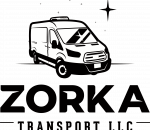REFRIGERATED SHIPPING FAQ's
We all love to do our groceries from local farmer’s markets and organic markets but the majority of us haven’t realized that there are many fruits and vegetables that can’t be grown in local surroundings. So, the question here is how those food products end up on the shelves of local stores all fresh and tasty. Sometimes the products are hauled over from other states traveling the distance of many miles and still you find them fresh. The simple answer to the ambiguity will be shipping refrigerated trucking.
Refrigerated cargo shipping has revolutionized the concepts of transport and the food industry got to reap the majority of the benefits. Refrigerated transport is not only limited to food items or groceries, but the pharmaceutical sector is also able to transport temperature-sensitive medicines across different states.
Cold-chain transport or refrigerated shipping transport is the revolutionary transporting style that allows the special temperature-controlled truck to deliver the products. These special trucks are equipped with temperature units that allow the products to be transported at desired temperatures without compromising their integrity of the products.
Going back to the 1800s, people used to transport sensitive products with the help of ice and salt maintaining the cold temperature throughout the journey. It was the only method back at that time to transport goods from one place to another. Although the method wasn’t effective as sometimes, products would go bad but that idea gave birth to modern cold-storage trucking. With the passage of time and advancement in technology, we came a long way from transporting goods with the help of salt and ice and are using refrigerated transportation to cover miles without compromising the products.
Refrigerated transportation has become more vital after strict food safety protocols are in place. Experienced companies like Zorka’s have accepted the challenge to follow all protocols strictly and equip the trucks with proper advanced technology so the trucks can maintain temperature throughout the journey. The goal is to keep the temperature inside the truck at one level despite the changing temperatures outside passing from one state to another. But how does this work?
To explain it further, we have to dig down at the three main components of the refrigeration system.
- Compressor – As the name suggests, the compressor is responsible for turning the gaseous refrigerant into liquid via compression.
- Condenser – The liquid refrigerant from the compressor then makes its way into a condenser. After compression, the temperature is raised for the refrigerant but after entering the condenser, the majority of the heat is released in a short span.
- Evaporator – Last but not least is the evaporator. As soon as the refrigerant makes its way into the evaporator, it has been cooled off completely. The evaporator then slowly transforms the refrigerant into a gas which is then diffused to maintain the temperature and protect the products from hot weather.
Let's start with the advantages:
- Driving combined refrigerated trucks and standard freight trailers open up additional job options. Greater career opportunities usually imply more money.
- Refrigerated truck drivers require additional training. Some may regard this as a disadvantage, yet more accountability means more money.
- Reefer drivers are constantly in great demand since fresh food is always in high demand.
Cons:
- Deliveries are often performed in the early morning, and hauls might be great distances. As a result, much of the traveling is done at night.
- The refrigeration system makes a lot of noise. This may be frustrating for rookie drivers and takes some getting accustomed to.
- A breakdown can be more damaging than a conventional trailer breaking down. Food spoilage might occur as a result of the refrigeration system.
Our main VANS are 10-13’ but we also deal with less-than-truckload having 28’ and 30’ trucks.
We have 10’ trailers but if the size of shipment is too large or wide, then we also have flatbeds to accommodate all your necessary shipments.
For standard pallets of 40x48x48 inches, 2 pallets are easily accommodated. If the pallets are double stacked then 4 pallets can be accommodated.
Standard pallets of 48 inches can be double stacked which means the truck can handle 96 inches of height.
To ensure the safety of trucks and compliance to road safety, knowing the exact weight is recommended.
8 inch or less wide pallets are easily handled.
Flatbed tarping is strapping the shipment with heavy tarps to protect the produce from weather or getting damaged. Zorka does not deal with flatbed tarping.
All our trucks are relatively new equipped with the latest technology. Our average age of truck is 2 years old.
Packaging can vary from parcel to parcel. However, to ensure maximum safety, we recommend stacking all the packages on a single pallet and then carefully shrink-wrapping it to secure everything. Shrink-wrap pallets are easy to load and offload which can save time.
The proper way to track and check your shipment is to confirm the pickup time, make sure the address is correct, and have the bill of lading with all the content included.
We make sure that the drivers arrive at the location at a dedicated time. However, if the driver arrives early then we assure you that there won’t be any extra charges and you can load the shipment on dedicated time.
Yes. Do check with our customer care team and Zorka will take care of the rest.
For standard parcels, all you need to do is log on to the website and enter the tracking ID. All the details will be displayed on the web page. If the shipment is transported through the carrier, then you can track it by checking on the dispatch team and all the details will be shared.
It all depends on the type of shipment and distance. If the distance is longer to be achieved via road transportation, then air freight is the other option which can often be more expensive than usual. To get more details, you can contact our customer care team to know more about the shipping needs.
Shipments are often denoted for active movement of products through the supply-chain network whereas freight is denoted for the actual product.
This is known as transloading, and it might happen at times at the customer's request. A consumer will suffer more charges due to the labor needed.
Freight Questions
When shipping via less-than-truckload (LTL) freight transportation, freight class is a defined method used to categorize goods into 18 classes based on value, weight, density, length, height, ease of handling, and liability. This method is in place to ensure that clients obtain impartial freight prices.
We can haul almost any cargo that our vehicle can lawfully transport securely. For further information, please contact one of our shipping consultants.
We perform an immediate inquiry on receipts to and from the customer associated with the SKU(s) in question. This inquiry will often include discussions with the customer. For all customers, we have an agreed-upon SLA in place to protect both the warehouse and the owner of goods, which allows a very small variance discrepancy in which both parties understand and can recoup any financial loss when a loss occurs.
Rates are based on distance, weight, length, height, density, ease of handling, value, and liability from things like theft, damage, break-ability, and spoilage. Typically the lower the NMFC class number for your shipment the lower the freight charge will be.
Yes, because of the equipment needed to keep the product frozen or refrigerated.
Delivery Questions
A fully loaded typical 11’ trailer with freight that has been palletized and single stacked can be unloaded in roughly 15 minutes. If the pallets are double stacked then it can take an hour. Freight that is not palletized and loosely packed can take 1-2 hours to unload depending on the weight, quantity, and ease of handling.
Drivers can at times help unload at the customer’s request, but there is an additional fee.
Yes, we can deliver freight when it’s snowing. All of our trucks are equipped with traction devices so that we can make our deliveries when the weather changes.
Yes, we can do both depending on the equipment being used.
FTL & LTL Questions
LTL refers to shipping loads that don’t require the space of a full container. In LTL services, similar kinds of products from different senders can be shipped together which allows fast delivery and competitive prices.
In FTL, a full truck is required to transports goods from one place to another. We at Zorka’s have both kinds of services. As per your requirement, we can arrange both LTL and FTL services.
The weight and volume are both considered for FTL.
It will be necessary for the client to pay for a second truck to fulfill the load.
Payment Questions
We promise a response within 24 hours, but most of the time we can offer a quotation within an hour.
Quotes might fluctuate according to capacity, market fluctuations, and fuel prices.
Accessorial costs are fees for services that are not included in our standard pickup and delivery. These can involve things like interior delivery, waiting hours, fuel surcharges, storage, and so on.
Other Questions
No. Please contact our shipping department to discuss your unique requirements.
Choosing the correct firm is critical, and there are various variables to consider. If they distribute to a variety of locations, you should be aware of their service's availability. If the organization can transport your items in a variety of markets, it will be a fantastic chance for you to expand your business. It is also critical to select a firm that is easy to work with, one that is dedicated to providing exceptional service and attending to your demands. You should also inquire about the company's pricing. There are lower-cost quotations available, but the concern is whether your items will be transported securely. So, take the time to research and evaluate not just the costs but also the company's capabilities to convey your items. One firm may charge a greater fee, but they will deliver your items on schedule and in good condition. The overall performance of the firm in terms of client satisfaction is the most essential consideration in picking the company.
Refrigerated transport, often known as refrigerated delivery, is a kind of transportation that transports perishable goods such as food, milk, dairy products, fish, and meat at temperatures suitable for keeping frozen products.
Obtain any contact information for the firm and request an estimate. You will be provided with all of the information you require. You will also be given paperwork and applications. It is also critical that you understand the delivery timetable and the places that the organization serves.

